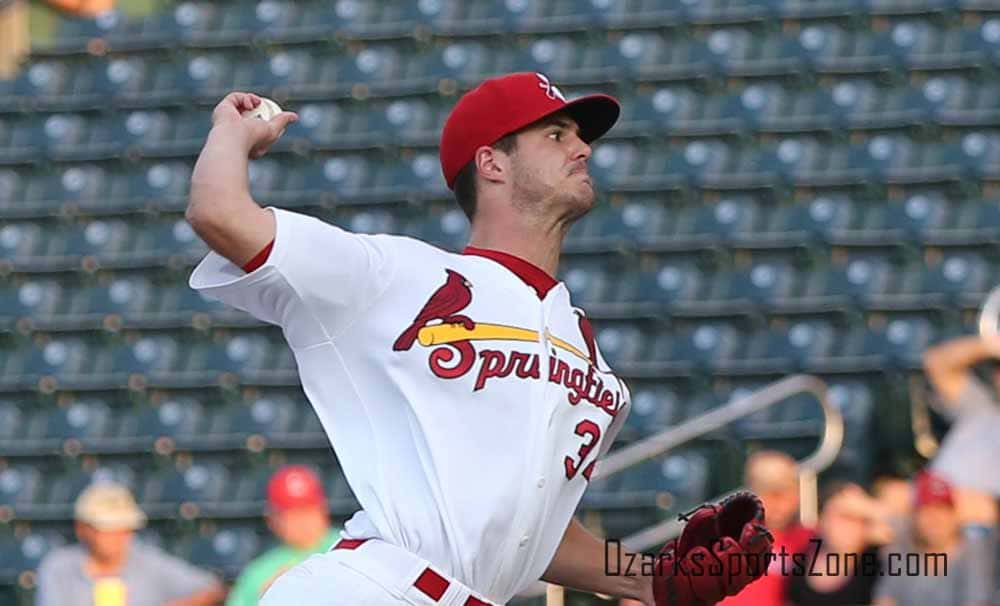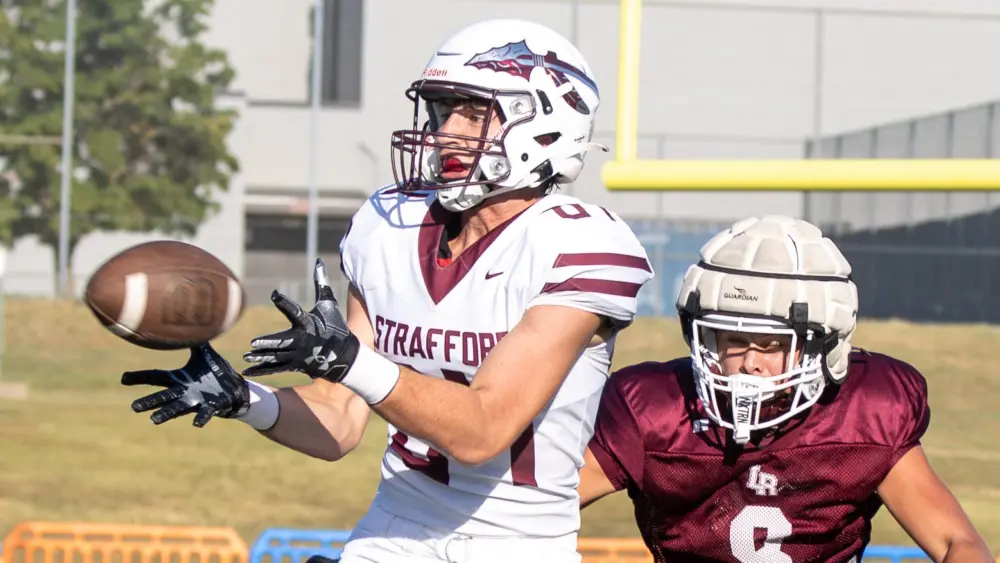By Kary Booher (for the O-Zone)
His fastball reached the low 90s while still a high schooler – must be nice, huh? – and yet, even then, his first two seasons at Mississippi State University were spent toiling in the Bulldogs’ bullpen.
“Throwing only 15 innings in college for two years was not (ideal). That was a learning curve for me – big-time,” Dakota Hudson will tell you. “Two years in the bullpen put an urgency on learning how to go about your business and learning how to get out there and throw every day. … The guys in front of me were better than me. All I had was a fastball. So I had to learn.”
And to think that was only two years ago. Because now look – Hudson is a bona fide prospect right-handed starting pitcher in the St. Louis Cardinals farm system. In fact, his 2017 summer here with the Double-A Springfield Cardinals has been so good that, if he doesn’t watch himself, he’s going to get himself promoted to Triple-A Memphis.
Call it a whirlwind from nowhere to knocking on the door. This for a guy who was a first-round draft pick just last summer and now may be only a wipe-out curveball away from convincing many that his future is in the big-league starting rotation. You see, this summer, the organization asked him to adopt a north-to-south pitch to compliment his east-to-west cutter – and the curveball bites.
“If he can get that down, he could be a starter,” said Springfield pitching coach Jason Simontacchi, a former big-leaguer.
Said Springfield manager Johnny Rodriguez, “He’s got make-up, a desire to win. Plus, he has stuff. He’s got a cutter, a fastball that’s 94 to 96 (mph) with good life late, and we told him to use his change-up and curveball more so people will lay off his cutter. … Overall, he cares about his career. He’s a superb (draft) pick. This kid is a winner, a Cardinals type player.”
And then Rodriguez added this, “Let me put it this way – he has a chance be really, really special.”

Mr. Reliable
Following his start on Monday night, Hudson leads the Texas League in earned earned run average (2.69) in 107 innings.
More so, he has proved to be Mr. Reliable – that is, by firing quality starts (at least six innings pitched, with three earned runs or less) in 11 of his past 12 starts, including 10 consecutive. That dates back to mid-May.
Oh, and he drew the premier role as the starting pitcher in the Texas League All-Star Game in late June.
But is the curveball working?
Well, put it this way. He threw 24 of them in his July 6 start. Some 18 went for strikes. It’s proof that Hudson hasn’t arrived to Double-A assuming he knew all the answers. Instead, he listened to the advice and went to work.
That’s a long-winded way of saying the curveballs bend for strikes. For hitters, it’s a challenge because of Hudson’s considerable size advantage, as he is a 6-foot-5, 215-pounder.
“By going with his curveball, which is 12-6 and trying to get more angle on it … you can elevate with the fastball, up the ladder and the cutter east and west,” Rodriguez said. “That’s going to be a key for him.”

Pretty good journey
Hudson piqued interest while at Sequatchie County High School in Dunlap, Tenn., and was a 36th-round draft pick of the Texas Rangers in 2013 yet chose to head off to the Southeastern Conference.
“I never hit 100 (mph), but I definitely tried,” Hudson said, breaking into a grin. “In college, it took me getting hit in college with just a fastball. A little bit of failure never hurt anybody.”
Hudson became Mississippi State’s team captain and premier role of Friday night starter in 2016, but only after a tour through the prestigious Cape Cod League. That summer sort of crystalized, for Hudson, what he could become, particularly because he was ready to take the next step from bullpen guy to starting arm.
Now here in Double-A baseball, the learning continues. The change-up is helping to play off his sinker – and he’s selling it as a fastball – and then there is the curveball.
“It’s something I can use as a strikeout pitch and work more vertically in the zone,” said Hudson, who now owns an 8-6 record. “It’s been good. Lately, I’ve been throwing it more in games, so I’m seeing more results with it. And consistent, too.”
He’s issued 30 walks in his 100 innings, although he has 10 wild pitches.
Fortunately, he has Simontacchi as his pitching coach, such as the way to approach a game, thinking about each batter but also thinking ahead.
“There’s a lot of stuff you learn just by listening and questions. Sometimes, I feel like I annoy people just by asking people the questions I ask,” Hudson said. “Sometimes, it’s weird stuff you learn from guys. You never know what’s going to help you in your career.”
Simontacchi wants him to read hitters and not simply feed batters fastballs in fastball counts. Although, Hudson isn’t afraid to move guys feet by throwing a strike for effect.
“It’s fun to be able to play a game in my own head, how I’m throwing, whether it’s making a big pitch or getting a ground ball,” Hudson said. “It’s what will help if I get to a higher level.”







